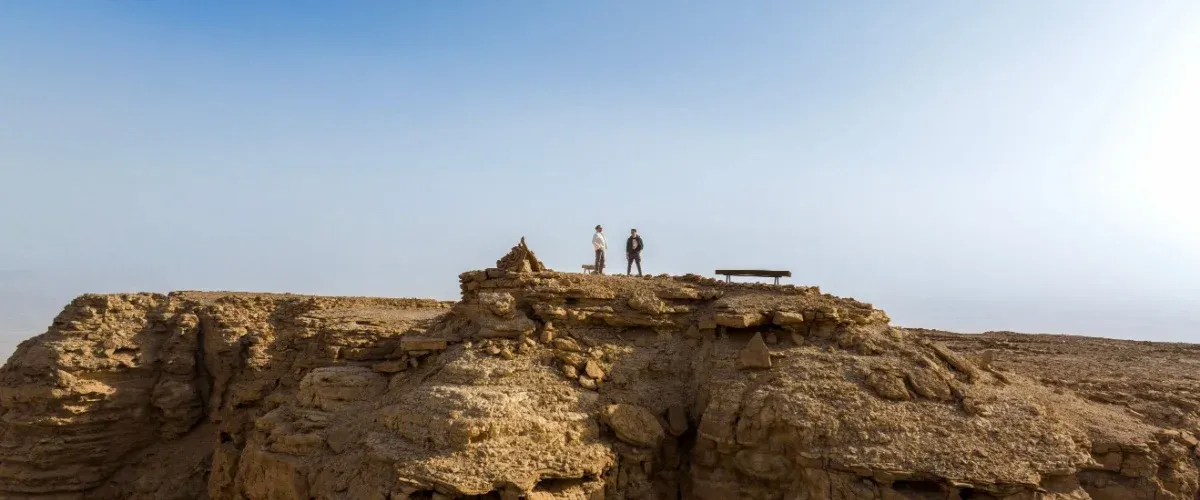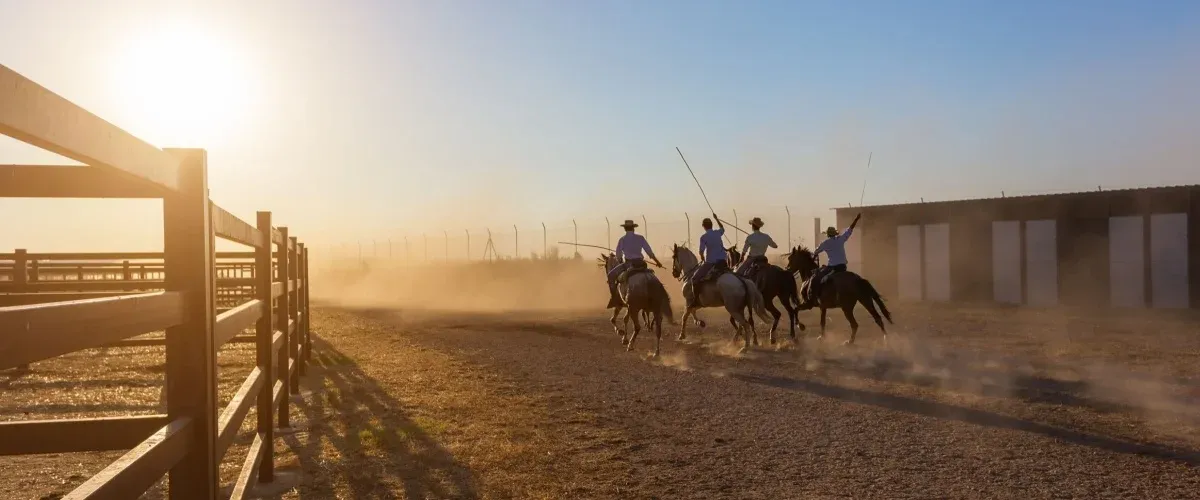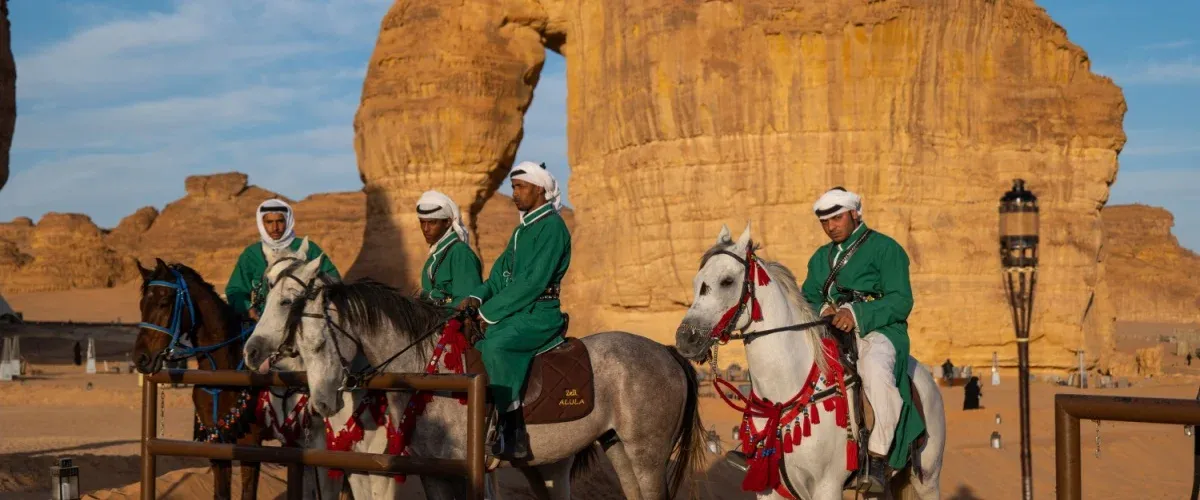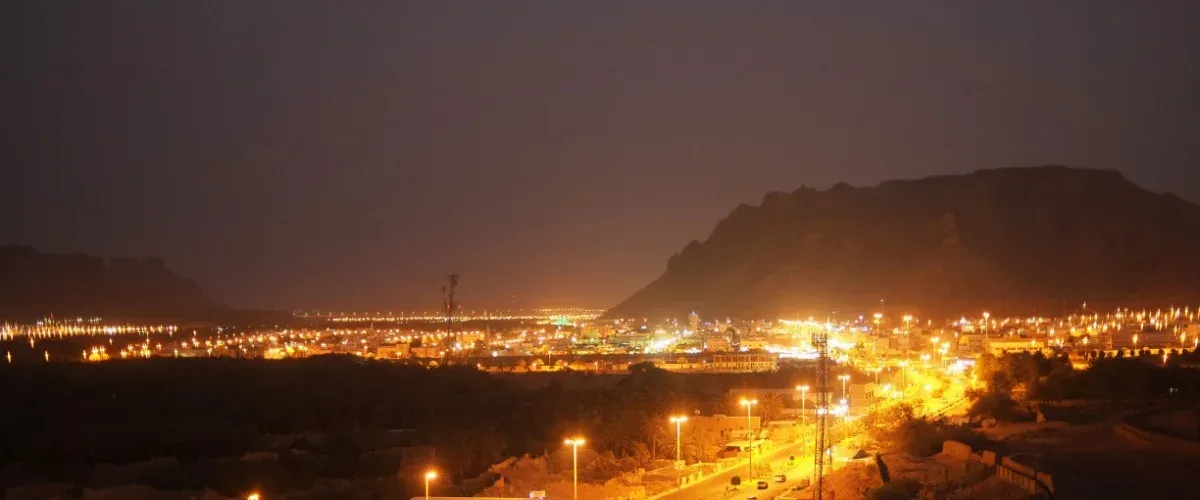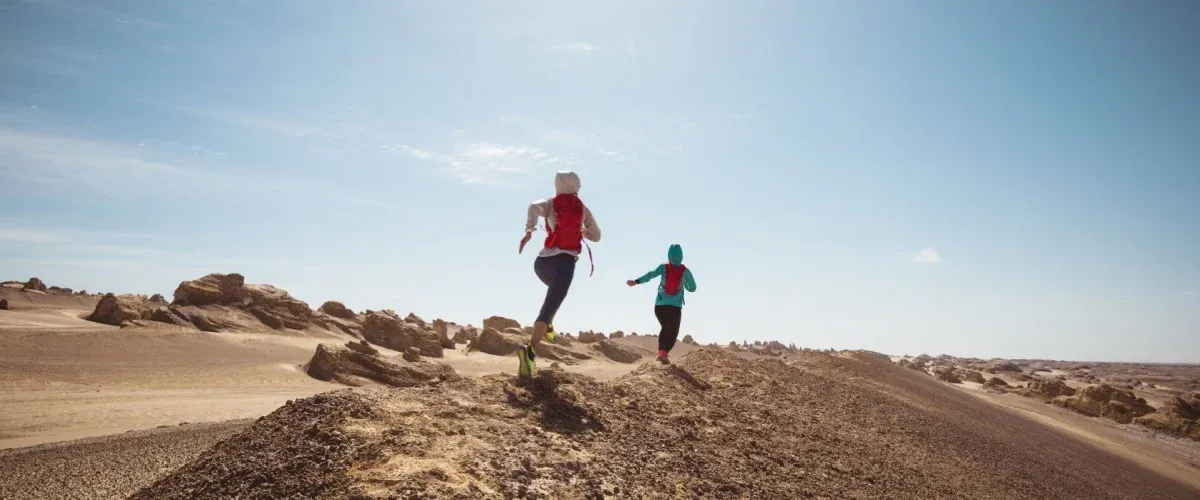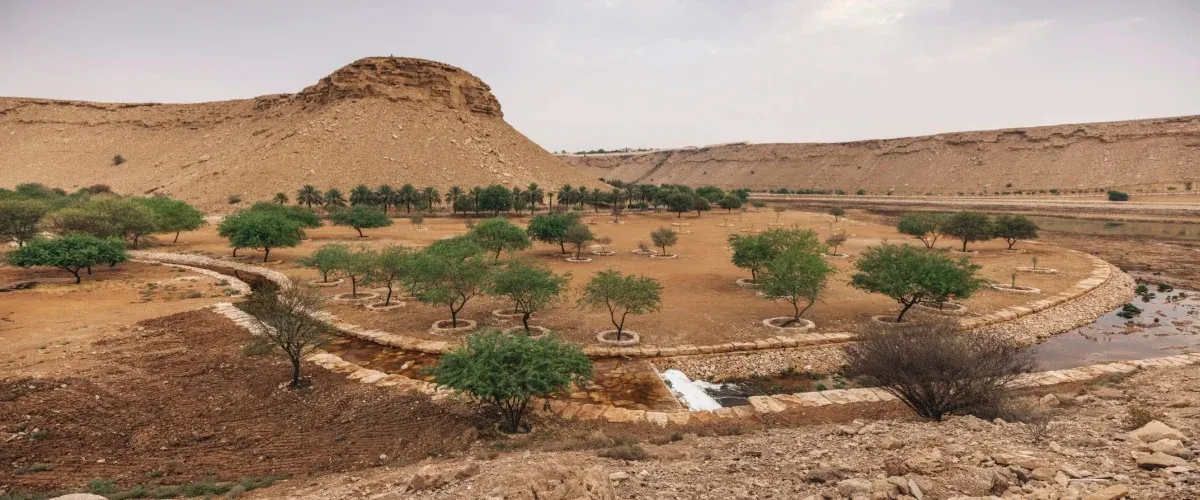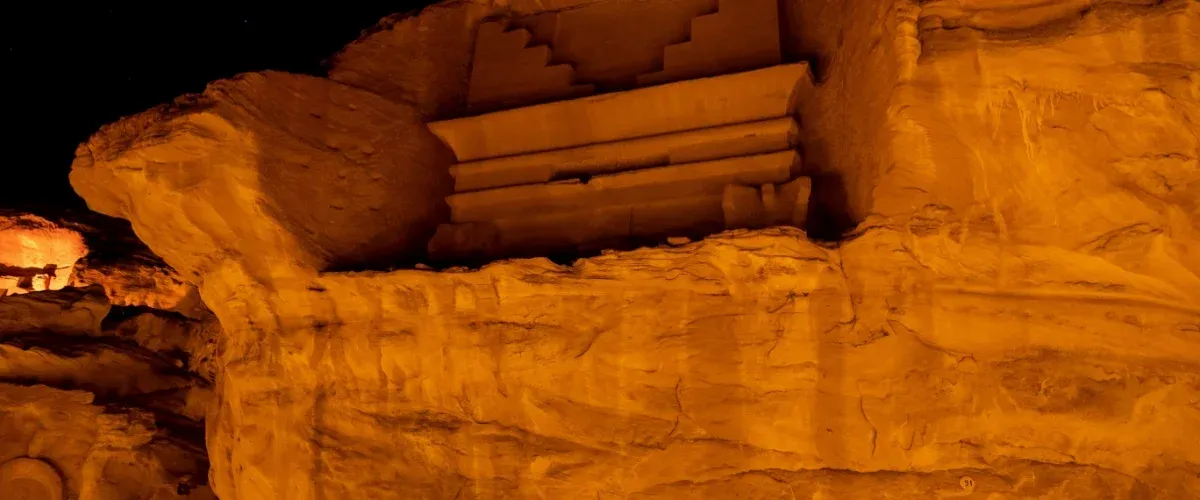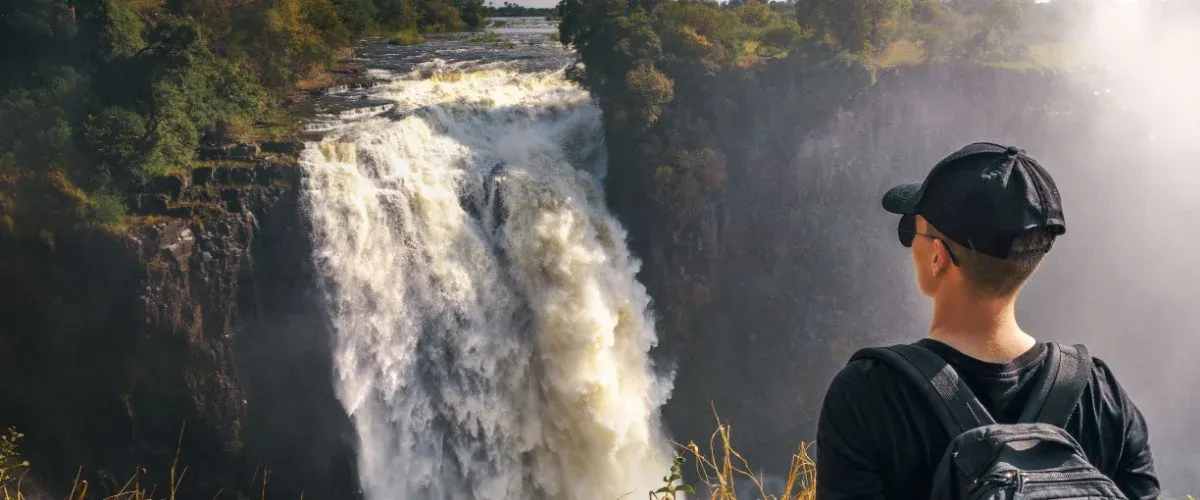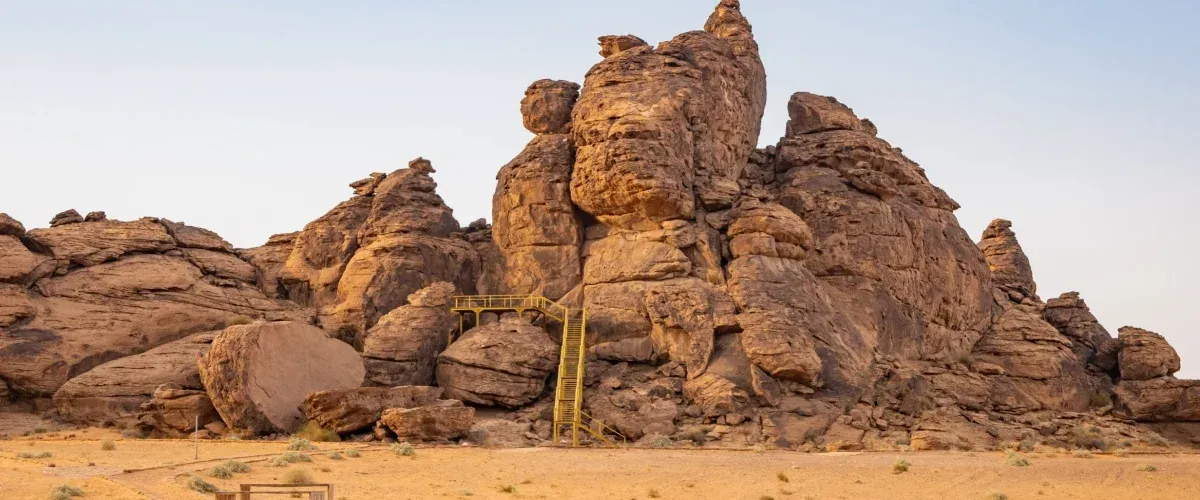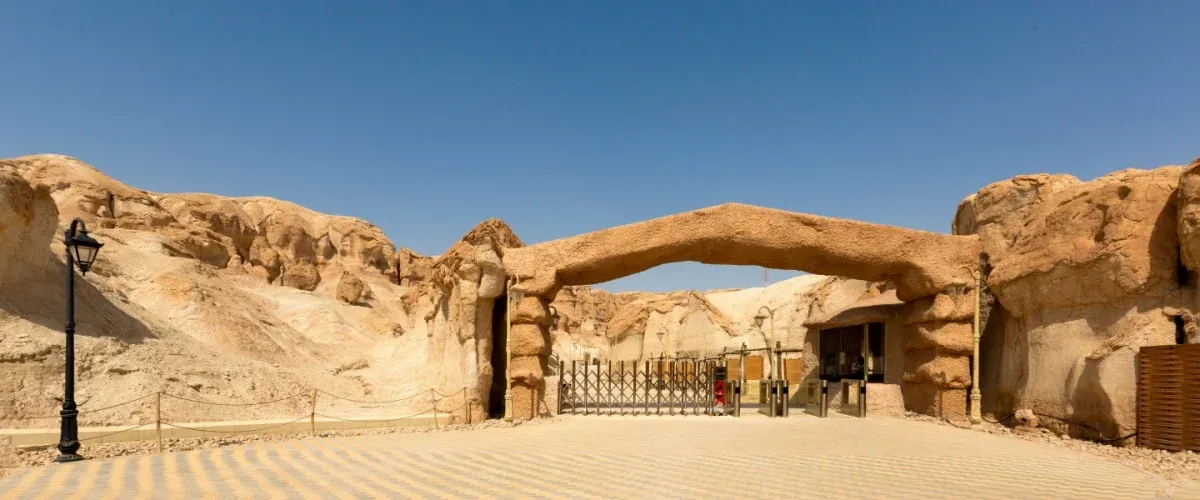Riyadh, the vibrant capital of Saudi Arabia, is emerging as a must-explore destination for adventure lovers and cultural travelers in 2025. Once best known for its gleaming skyscrapers and rich history, Riyadh is recognized as a hiking hotspot. It offers visitors a unique blend of dramatic desert landscapes and ancient heritage. As international borders open wider, the city invites tourists to experience trails that wind through mysterious canyons, rocky plateaus, and untouched sand dunes. Hiking in Riyadh promises moments of awe and discovery at every turn. With improved infrastructure and growing traveler buzz, it’s no wonder this destination is trending for those eager to step beyond the ordinary in 2025. Let’s delve in and find out the best places for hiking in Riyadh.
Explore These Top 15 Hiking Attractions in Riyadh
1. Edge of the World (Jebel Fihrayn)
.webp)
Edge of the World, also known as Jebel Fihrayn, is one of Riyadh’s most famous hiking spots. Located about 90 km northwest of the city, this dramatic cliff formation offers enticing views of the endless desert below. The name comes from its sheer drop-offs that make it feel like the land suddenly ends. The hike to the viewpoint is moderately challenging, with rocky paths and loose gravel in some areas. It’s a favorite spot for photography, especially during sunset when the golden light covers the cliffs. The area is remote, so visitors should bring enough water and snacks.
Best Time to Visit: October to March
Hiking Tips:
- Wear sturdy shoes with good grip.
- Carry plenty of water and light snacks.
- Avoid hiking in the midday heat.
- A 4x4 vehicle is recommended for the off-road section.
2. Wadi Hanifah
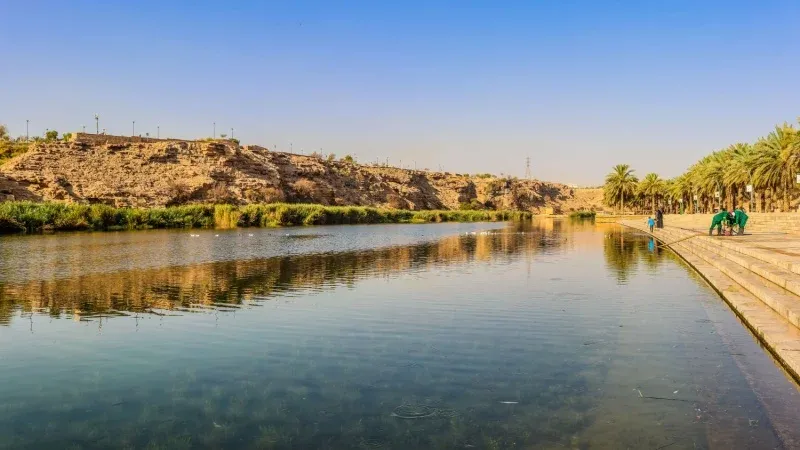
Wadi Hanifah is a natural valley stretching over 120 km through Riyadh, offering a peaceful escape from the city chaos. Known for its scenic landscapes, it features palm groves, small lakes, and walking paths. The hiking trails here are mostly easy, making them suitable for beginners and families. Along the way, you’ll spot local plants, birds, and shaded areas perfect for resting. The valley has been developed with picnic spots, bridges, and pathways, making it a favorite for both leisure walks and light hiking. It’s also a great place for cycling or simply enjoying a quiet day outdoors.
Best Time to Visit: November to March
Hiking Tips
- Try to avoid mid‑day hikes as temperatures rise quickly even in winter.
- Pack your favourite snacks for quick energy.
- Wear breathable clothing; humidity can rise near the lakes.
- Plan rest breaks under shaded palm groves along the route.
Suggested Read: Places To Visit In Riyadh: Top Attractions People Can Visit For An Astonishing Vacation
3. Jabal Tuwaiq
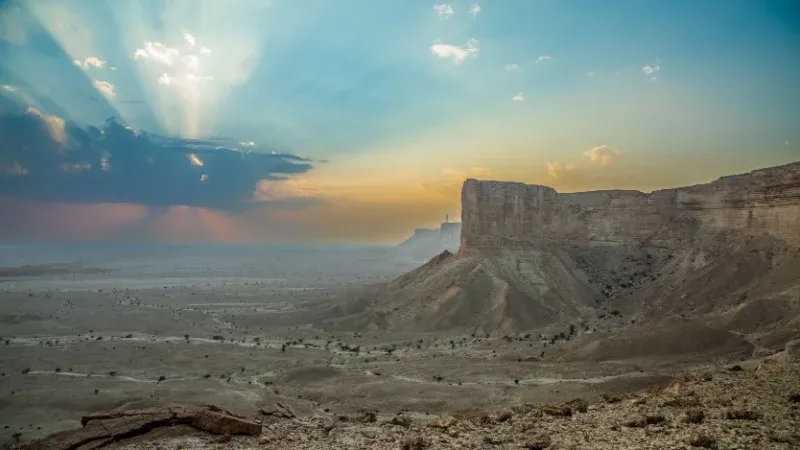
Jabal Tuwaiq is a remarkable mountain range framing the western edge of Riyadh. The escarpment’s rugged cliffs, limestone ridges, and hidden caves are a playground for adventurous hikers. It’s a little off the beaten path, and its trails range from easy to challenging, passing fossil-studded rocks and offering endless photo stops. History buffs will love the area’s role as a trading route and natural fortress through the centuries. Hiking here feels almost heavenly , especially during the golden sunset.
Best Time to Visit: October to March
Hiking Tips
- Use a 4×4 vehicle with high clearance as the road is rocky and uneven, especially after passing Sadus Dam.
- Never hike alone; go with at least one companion or a group, ideally with someone who knows the route well.
- Bring at least 3–4 liters per person; the desert air dehydrates you quickly even in cooler months.
4. Heet Cave (Ain Heet Cave)
.webp)
Heet Cave, also called Ain Heet Cave, is a hidden natural wonder about 40 km southeast of Riyadh. Known for its underground lake with clear, turquoise water, the cave is situated at the foot of Mount Al‑Jubayl. Its entrance is wide but leads into steep, rocky paths that require careful footing. The cave’s water is cool year‑round, making it a refreshing spot for adventure seekers. While swimming is possible, it’s best for experienced swimmers due to the uneven terrain and depth. The cave is popular among hikers, photographers, and geology enthusiasts who come to explore its limestone formations and unique underground beauty.
Best Time to Visit: October to April (During Mornings)
Hiking Tips
- Wear lightweight hiking pants to protect legs from sharp limestone edges near the cave.
- Use gloves for better grip when descending the steep, uneven entry slope.
- Water inside can be very cold, if you plan to swim, bring quick‑dry clothes and a small towel.
- The cave floor can have loose gravel; step carefully to avoid slipping.
- Avoid going after heavy rain as the entry path can become unstable.
Suggested Read: Things To Do in Riyadh: From Ancient History To Star Gazing
5. Saqr Trail (Wadi Sulay)
.webp)
Are you looking for a peaceful escape from Riyadh’s busy streets? Saqr trail or Wadi Sulay is an ideal location for adventure seekers. The trail follows a dry riverbed surrounded by desert vegetation, small rock formations, and the occasional birdlife. It’s relatively flat, making it ideal for hiking or those looking for a relaxed nature walk. The area is known for its wide-open skies, making sunrise and sunset especially beautiful. Along the way, you may spot small patches of greenery fed by seasonal rainwater. It’s a great spot for photography, picnics, and enjoying the quiet side of Riyadh.
Best Time to Visit: November to March
Hiking Tips
- Wear comfortable walking shoes with good grip to handle sandy and rocky patches.
- Carry a hat and sunglasses to protect yourself from the Sun.
- Do not go hiking during the rainy season, slippery trails can lead to major consequences.
- Bring binoculars if you enjoy birdwatching. The migratory birds pass through in cooler months.
- Must carry your own water bottles, drinking water may not be available through the path.
6. Diriyah
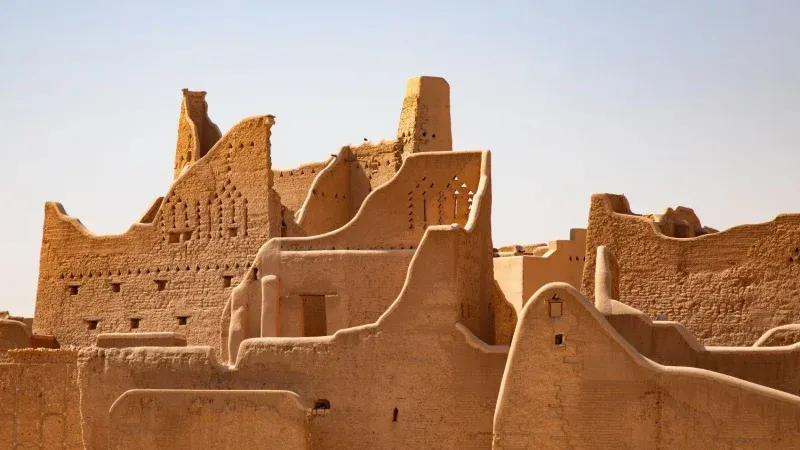
Diriyah, the historic heart of Saudi Arabia, also a World UNESCO Heritage site. It has scenic walking and hiking routes that let you explore its heritage alongside nature. The trails take you past restored mud‑brick buildings, palm groves, and shaded pathways along the Wadi Hanifah banks. You’ll spot traditional watchtowers and old farm walls while enjoying the calm surroundings. The routes are not difficult, making them ideal for relaxed walks that blend history and outdoor activity. Visiting Diriyah lets you combine a gentle hike with a cultural journey through one of the Kingdom’s most important heritage sites.
Best Time to Visit: November to March
Hiking Tips:
- Start your hike during mornings or late afternoon to enjoy the golden light on the heritage buildings.
- Wear light, breathable clothing; shaded spots help, but sun exposure is still high.
- Keep an eye out for uneven stone steps near restored structures.
- Carry a small camera to capture the stunning panoramic views.
- Stop at small cafés along the route to rest and enjoy local drinks.
Suggested Read: Doos Karting in Riyadh for an Ultimate Indoor Electric Karting Experience
7. Red Sand Dunes (Al Thumama Desert)
.webp)
The Red Sand Dunes in Al Thumama Desert are a popular spot for hiking, dune climbing, and desert exploration near Riyadh. The sand’s rich red hue is most vibrant in the early morning and late afternoon, making the landscape a popular spot for photography. Hikers can walk along the ridges, enjoy panoramic desert views, or test their endurance on steep dune climbs. The area is also a hotspot for weekend gatherings, with locals enjoying quad biking and picnics. Its close distance to the city makes it an easy escape for outdoor lovers looking for a true desert experience.
Best Time to Visit: November to March
Hiking Tips
- Start early in the morning to avoid the midday heat and to see the sand’s deep red color.
- Wear gaiters or high socks to keep sand out of shoes during climbs.
- Bring a scarf or face covering as winds can quickly blow sand into your face.
- Use trekking poles for extra stability on steep dune slopes.
- Keep your route visible as the dunes can look similar, making it easy to lose your direction.
8. Al Uyaynah Village and Wadi
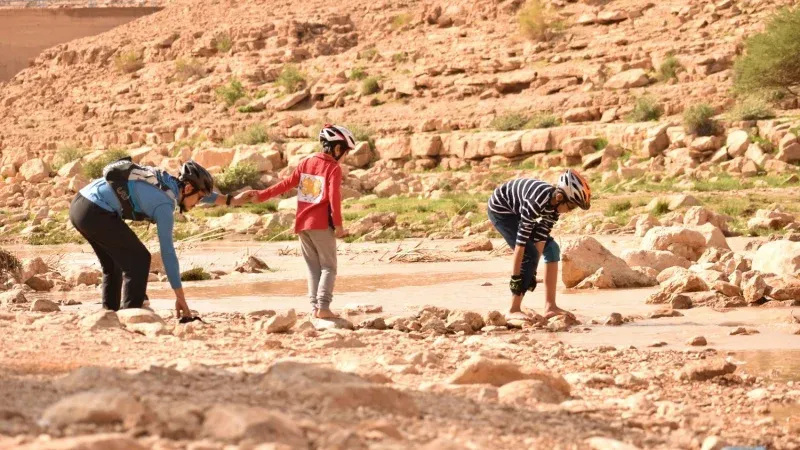
Located northwest of Riyadh, Al Uyaynah village is known for its deep historical roots and scenic wadi landscapes. The village was once home to significant figures in Saudi history, and nearby wadis offer quiet hiking routes surrounded by rocky cliffs and sparse vegetation. The trails often pass by small farms, natural rock formations, and seasonal water channels after rains. It’s a great spot for hikers interested in combining cultural exploration with nature. The peaceful setting makes it a refreshing change from the busier trails around Riyadh.
Best Time to Visit: October to April
Hiking Tips
- Enter from the village’s western side for easier access to the main wadi trail.
- Avoid deep wadi sections during or after rain.
- Look for goat paths; locals use them and they often lead to scenic viewpoints.
- Carry a walking stick to help with loose gravel and small boulder climbs.
- Plan your return before sunset as the village and wadi have minimal lighting.
Suggested Read: Top Cafes in Riyadh: Great Place to Enjoy a Cup of Aromatic Coffee
9. Camel Trail (Darb Al-Jamal)
.webp)
Also known as Darb Al Jamal, Camel Trail is an ancient path carved into the rocky slopes near Riyadh. It was once used by traders and pilgrims to travel between villages, and its name comes from the camel-shaped rock formations along the route. The trail passes through sandstone cliffs, narrow passes, and weathered rock surfaces that reveal centuries of use. It’s a moderately challenging hike with uneven stone steps and sections that require careful footing. The area is quiet, with sweeping desert views that reward those who reach the higher points.
Best Time to Visit: October to April
Hiking Tips
- Start from the northern trailhead for a gentler ascent and better shade in the morning.
- Wear firm-grip shoes as the old stone steps can be polished smooth from centuries of use.
- Follow the chiseled grooves in the rocks; these mark the original caravan route.
- Watch for loose rock chips in narrow sections that can cause slips.
- Carry extra water as there are no refill points along the trail.
10. Rawdat Khuraim
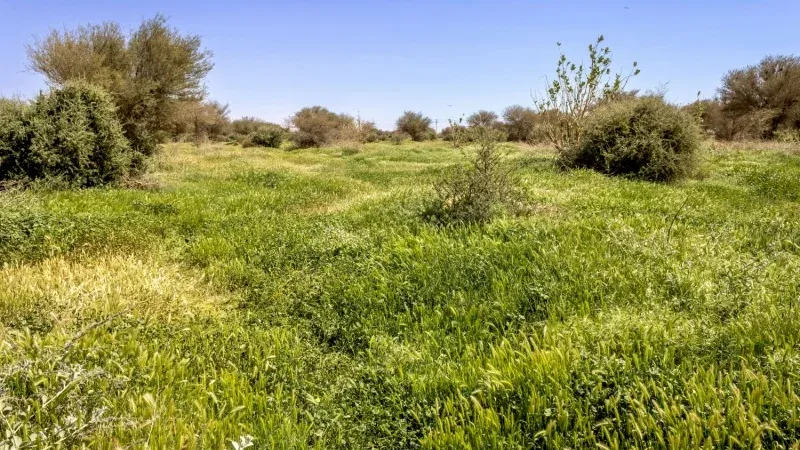
Rawdat Khuraim, often called the “King’s Forest,” is a protected green reserve northeast of Riyadh. After winter rains, the land turns bright with grass and colorful wildflowers. You can witness unique desert animals and colorful birds, making it a peaceful place for nature lovers. The land is mostly flat, so walking and hiking are easy for all ages. You will see shallow streams, open fields, and shady acacia trees that make it a nice spot for a picnic too. In spring, it becomes one of the prettiest places near Riyadh to enjoy fresh air and nature.
Best Time to Visit: February to April
Hiking Tips
- Hike after rainfall, this is when the desert flowers bloom most vividly.
- Wear light hiking boots to handle damp soil and shallow muddy patches.
- Stick to marked trails to protect fragile plant life.
- Bring binoculars for spotting migratory birds in the reserve.
- Plan a morning hike for softer light and cooler temperatures.
Suggested Read: Camping in Riyadh: To Get Peace of Mind and Enjoy Nature
11. Al Masmak Fortress Area
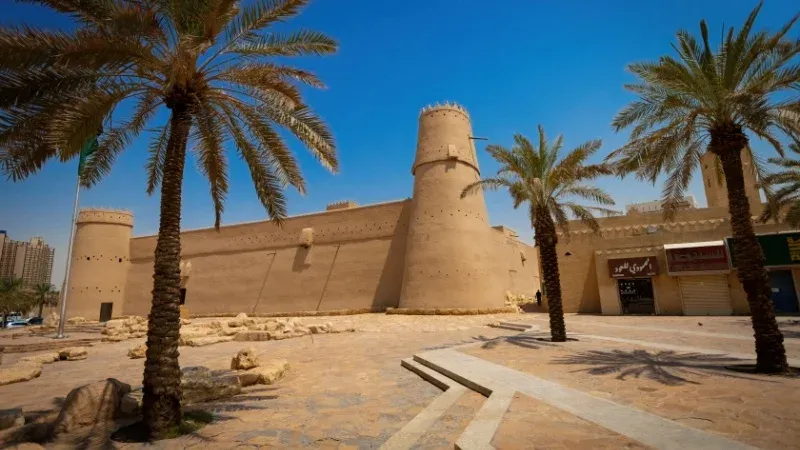
Al Masmak Fortress is one of Riyadh’s most important historical sites. Built in the late 1800s, it played a key role in the unification of Saudi Arabia. The mud-brick fort stands in the old quarter, surrounded by narrow streets and small traditional shops. Visitors can explore its towers, thick walls, and a museum that tells the story of Riyadh’s past. Walking around the fortress area also gives you a chance to explore old Riyadh’s markets and architecture. It’s a short, easy walk, but the cultural value makes it a must visit for history lovers.
Best Time to Visit: November to March
Hiking Tips
- Begin at sunrise to enjoy pleasant weather with a lesser crowd.
- Follow the shaded alleys behind the fort for a cooler, quieter route.
- Do not forget to carry cash if you want to buy snacks or traditional items from a local shop.
- Keep your route circular so you return easily to the starting point.
12. Jabal Baloum
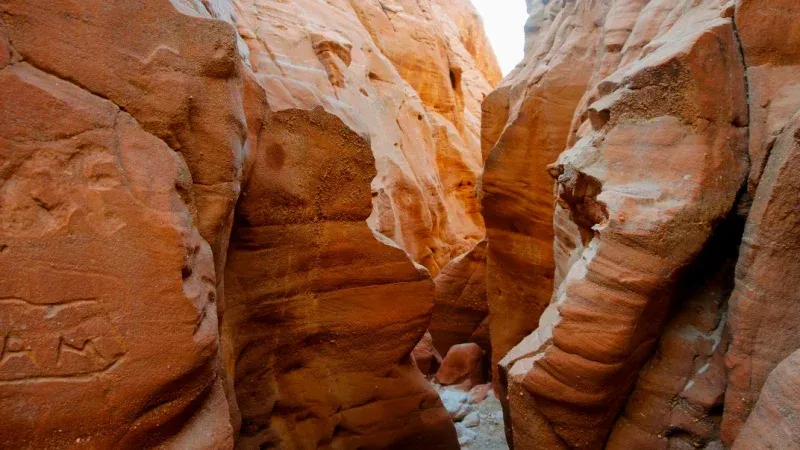
Jabal Baloum is a striking rock formation in the Nafud Desert, about 240 km north of Riyadh. It’s known for its massive sandstone cliffs and ancient petroglyphs carved into the rock, believed to date back thousands of years. The area is remote, with wide desert plains stretching to the horizon. Hiking here is more about exploring the desert’s raw beauty than following marked trails. The climb up the rock gives panoramic views of the surrounding sand dunes and open desert, offering a rare glimpse into Saudi Arabia’s untouched landscapes.
Best Time to Visit: October to March
Hiking Tips
- Park your vehicle on firm desert ground away from loose sand to avoid getting stuck.
- Approach the rock from the eastern side; the slope is less steep and easier to climb.
- Look closely at shaded rock faces to spot ancient carvings.
- If camping overnight, set up on higher ground to avoid cold air pooling in low desert basins.
Suggested Read: Horse Riding in Riyadh: Saddle the Horse, Conquer the Speed
13. King Khalid Trail

The King Khalid Trail in Riyadh is a scenic route that runs through rocky desert terrain and gentle valleys. It’s named after the late King Khalid and is popular with hikers who want a moderate trail with scenic views. The path offers a mix of open landscapes and shaded spots under acacia trees. You may see local wildlife like desert larks and small gazelles if you go early in the day. The trail is wide in most areas, making it suitable for both experienced hikers and casual walkers.
Best Time to Visit: November to March
Hiking Tips
- Start at sunrise to enjoy pleasant weather and better chances of spotting wildlife.
- Carry extra water as shaded areas are limited.
- Wear sturdy shoes to handle both rocky stretches and loose sand.
- Use a GPS track or map as some sections lack clear signs.
14. Al Ammariyah Hills
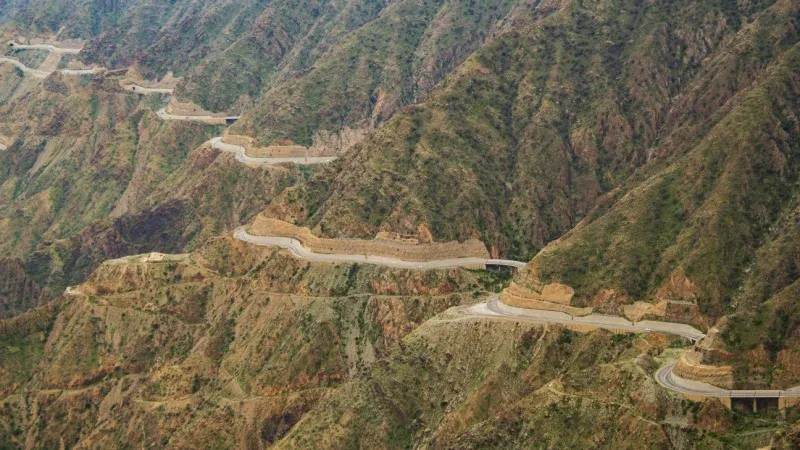
Al Ammariyah Hills, located northwest of Riyadh, is known for its striking sandstone cliffs and wide desert views. The area attracts hikers for its open landscapes, rock formations, and clear sunset views. The terrain is a blend of flat desert stretches with short climbs, making it ideal for moderate hiking. You may also witness unique desert plants and seasonal flowers after winter rains. Tourists often plan picnics to enjoy the view, you can see the rolling desert spreading far into the horizon.
Best Time to Visit: November to March
Hiking Tips
- Plan your hike to end by sunset for the best panoramic views.
- After rain, the sandy trails can be firmer and easier to walk.
- Carry a light jacket, as temperatures drop quickly in the evening.
- Choose sturdy footwear for grip on rocky sections.
Suggested Read: Best Parks in Riyadh: To Relish a Joyous Time in Nature’s Arms
15. Al Ghat Heritage Village and Cliffs
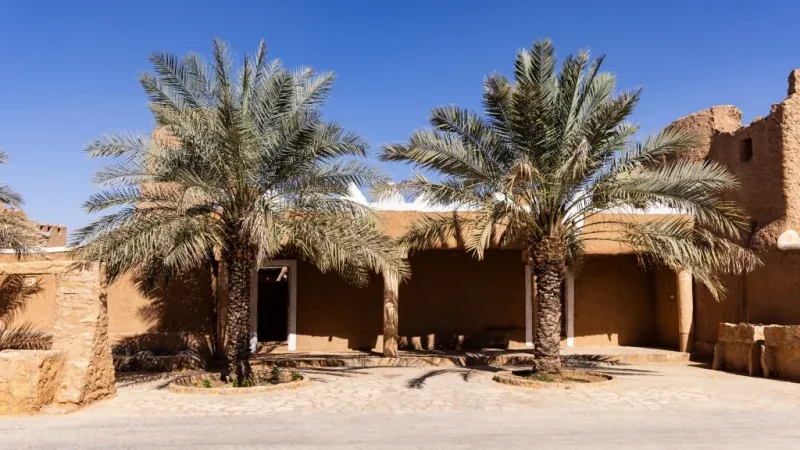
Al Ghat, located north of Riyadh, is a mix of history and natural beauty. The heritage village has restored mud-brick houses, old watchtowers, and narrow lanes that show the region’s past. Nearby cliffs offer short hiking routes with sweeping views of palm groves, farms, and the Wadi Al-Ghat valley. The climb is not too difficult, but the rocky paths require careful footing. After hiking, many visitors explore the village to learn about local traditions and enjoy the peaceful rural setting.
Best Time to Visit: November to February
Hiking Tips
- Begin your hike from the eastern trailhead behind the village for the least steep ascent.
- Avoid walking near cliff edges.
- If you visit after winter rains, follow the natural channels to spot small waterfalls in the wadi below.
- Carry a scarf or shemagh, it helps against sudden dust gusts common in open cliff areas.
Final Thoughts
Hiking in Riyadh is more than just walking on trails. It’s about seeing the city’s wild beauty and its hidden natural spots. From high cliffs to sandy valleys, every hike shows a new side of Riyadh. You can explore quiet wadis, red dunes, or rocky mountains, each with its own story. The cool months are the best time to enjoy these places. Whether you are new to hiking or an experienced trekker, Riyadh has trails for you. Every step brings fresh views and a deeper connection to nature. Plan your trip with Regency Holidays and enjoy the best hiking in Riyadh. Book your Riyadh tour packages today and start your adventure.
Hiking in Riyadh - FAQ’s
Yes, hiking in Riyadh is generally safe, especially on popular trails like Edge of the World or Wadi Hanifah. Stick to marked paths, bring plenty of water, and avoid hiking during intense heat. Traveling with a group or local guide adds an extra layer of safety in remote areas.
Modest, comfortable clothing with long sleeves and pants is recommended to protect from the sun and respect local customs. Good closed-toe hiking shoes, a hat, and sunglasses are essential. In winter months, a light jacket can be helpful for cool mornings.
Most hiking spots near Riyadh do not require permits, but guided tours are available and highly recommended for remote locations like Heet Cave or Jabal Tuwaiq. Guides improve safety and offer fascinating local insights.
Absolutely! Many trails, such as Wadi Hanifah, Saqr Trail, and Rawdat Khuraim, are family-friendly and suitable for all fitness levels. Just ensure children are supervised and bring snacks, sunscreen, and water.
October through April offers pleasant temperatures, cooler evenings, and sometimes green landscapes after rain. Summer months (May to September) can be extremely hot and are generally not recommended for hiking activities.
Most natural hiking areas are free to enter. Some places may charge a small fee for parking or guided tours. Renting a 4x4 or booking a private guide can add to the cost, but many trails are accessible by regular car.
Urban trails may have cafés and picnic areas, but most desert and mountain hikes do not offer amenities. Bring your own food, water, and a trash bag. For longer hikes, pack energy snacks and be prepared for no restroom facilities.
While some urban trails are accessible by taxi or ride-hailing apps, most remote hikes require a private car or 4x4. Several Riyadh tour companies offer group trips to popular hiking spots, making access easy for travelers.

